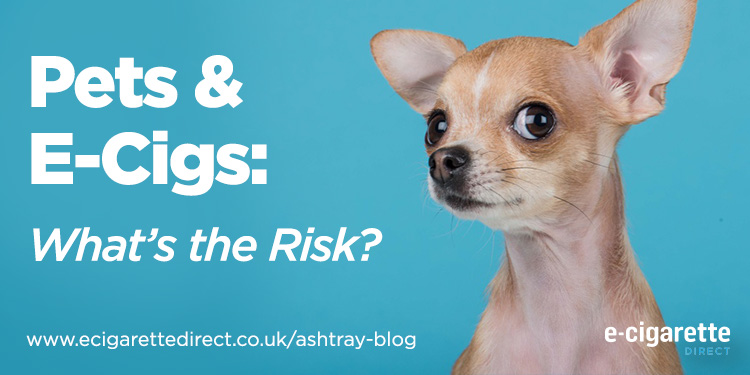
My cat is a curious sort. If there’s somewhere you don’t want her to go or something you don’t want her to chew on, you better believe she’ll do it.
So when I started having bottles of e-juice around the house, I was understandably cautious. A tragic story of a puppy that died after getting access to some e-juice drives the point home clearly: if you’re not careful, the consequences can be devastating.
As you’d expect, my cat was oblivious to this risk as she climbed up onto the shelf littered with mods and half-vaped bottles of e-juice. So I mustered as much will as I could and told her off.
Thankfully, she got the picture and jumped down.
But what if I hadn’t been there? Was she trying to chew my tanks or get into my delicious e-juice when I was out of the house? From that moment on I moved everything to a higher shelf when I wasn’t using it.
However, that isn’t the whole picture. Is vapour itself harmful to pets? Is second-hand vaping going to give our pets lung problems or other issues down the line?
Here’s what you need to know about keeping your pets safe while you’re vaping.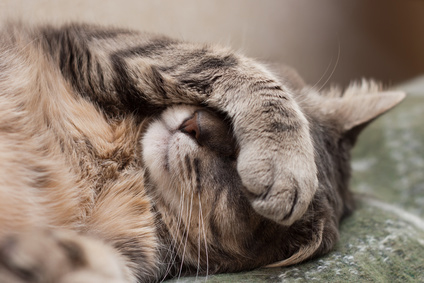
Pets and E-Liquid: Why Your E-Juice is the Main Concern
The issue of pets and e-cigs largely revolves around e-juice. The reason for this is simple: nicotine is a poison, and drinking e-juice is not a good idea.To understand why pets (and children) are the main concern when it comes to e-liquid poisonings, you need to learn something about poisoning risks. As you’d expect, it takes less nicotine to poison an ant than it does to poison an elephant. If you’re bigger, it takes more of a substance to poison you.
This same advice also applies within the same species. So a small child can’t ingest as much nicotine as an adult. This is why toxic doses – LD50 values, which is the dose that will kill half of those who consume it – are expressed in mg per kg of body weight. If you’re twice as heavy, it takes twice as much nicotine to kill you.
https://www.ecigarettedirect.co.uk/ashtray-blog/2013/12/eliquid-nicotine-lethal-dose.html
For small animals like dogs and cats, this means that it doesn’t take much nicotine to cause a serious problem. For dogs, for instance, the toxic dose is 9.2 mg/kg, so for a border collie weighing about 17 kg, this equates to about 156 mg of nicotine, or just under 9 ml of an 18 mg/ml e-liquid. For smaller dogs, like a Yorkshire terrier weighing about 2.7 kg, this would be just 24.3 mg, or less than 1.4 ml of an 18 mg/ml e-liquid.
While lower-nicotine liquids pose less of a risk, it’s clear that a bottle of e-juice will be enough to cause a serious problem for a pet if he or she gets into it.
We should stress that in most cases (with one notable exception we’ll cover later), nicotine is the only concerning ingredient in your e-juice. Food flavourings are safe for ingestion, and PG and VG are both used in pet food as a cheap source of carbohydrates. If you have nicotine-free e-liquid, the need for concern is drastically reduced.
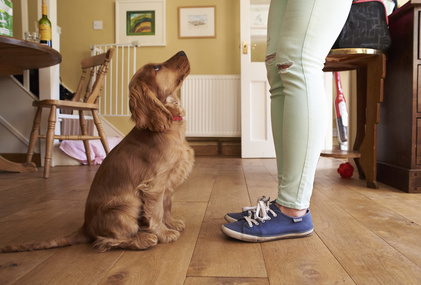 Proper E-Liquid Storage and Keeping Your Pets Safe
Proper E-Liquid Storage and Keeping Your Pets Safe
So the most important tip for keeping your pets safe when you vape is storing your e-juice safely. We’ve covered this in more detail elsewhere, but the basic points are very simple and can be condensed easily.The first – and most important – tip is to keep your e-liquid somewhere out of reach of kids and pets. This is as simple as finding a high shelf or a lockable box to store your e-juice in. If your curious cat or your destructive dog can’t find their way into your stash, then there isn’t even a chance he or she will swallow any e-juice and run into issues. It’s really that easy.
However, if you drip, or if you have a small tank and have to refill regularly, then you’ll probably have a bottle of juice to hand most of the time. All this means for keeping your pets safe is being mindful of where your juice is and where your pet is.
This is the situation I find myself in most of the time, but I always keep my e-juice near me, and can keep an eye on my cat easily. In my experience, though, cats aren’t especially interested in e-liquid, so I’ve never even had an issue.
Dogs are different, and some do really seem to like the smell of e-juice or vapour itself. They’re also bigger and more difficult to manage than cats, so you have to be especially careful. Again, though, this is common sense: keep an eye on your dog, and keep your e-juice either somewhere fairly hard to access or safely tucked away in a pocket.
https://www.ecigarettedirect.co.uk/ashtray-blog/2015/10/how-store-e-liquid.html
For completeness, there are a few other storage tips that aren’t related to keeping pets safe but are worth mentioning: keep your e-juice away from heat and light as much as possible, and minimise their exposure to air. This will maximise the shelf life of your juice.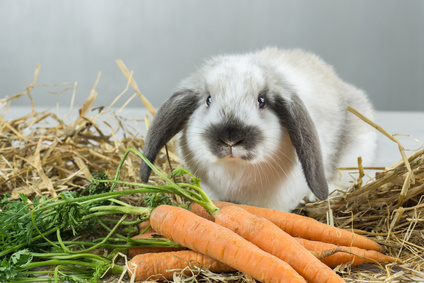 Second-Hand Vaping and Pets
Second-Hand Vaping and Pets
So the main risk for pets and e-cigs is mercifully easy to manage. Really, as long as you understand that there is a risk, common sense and a bit of vigilance will ensure you don’t run into issues. But what about other potential risks? Can the vapour itself harm your pets?This question is a little harder to answer, but the simple version is a tentative “probably not.”
It’s almost impossible to avoid the widespread messages that e-cigarettes contain harmful chemicals, but it’s less widely-known that the dose makes the poison. This is a fundamental principle of toxicology, and it really allays a lot of the widespread concerns about vaping.
A tiny bit of something bad isn’t likely to be dangerous, which is quite handy because you’re exposed to tiny bits of bad stuff all the time. Your breath contains formaldehyde. It’s actually produced by your body. Let that sink in for a moment.
When people drum up concern about chemicals in e-cig vapour, they barely ever talk about the amounts involved. If they did, they’d be pointing out that the harmful chemicals in e-cig vapour are only present in much lower quantities than in cigarettes, often hundreds of times less or even lower.
So it’s not too surprising that most studies of second-hand (or passive) vaping don’t find detectable amounts of harmful chemicals in the room after vaping (more studies here and here). The problem isn’t so much that it isn’t present, it’s more that it’s in such low quantities it’s hard to distinguish from the amounts naturally present in the air. The main exceptions to this are PG, VG and nicotine, as you’d expect, but these aren’t concerning in the amounts present in second-hand vapour.
https://www.ecigarettedirect.co.uk/ashtray-blog/2015/11/junk-e-cigarette-studies.html
This is why second-hand vaping isn’t really something to get worried about. It’s understandable that people are worried after years of being told to be afraid of anything that looks like a puff of smoke, but the reality is that second-hand vaping doesn’t appear to be an issue based on what we know so far.
For vaping and pets, the much lower levels of harmful components should allay any concerns you have. With the dangerous chemicals present in second-hand vapour being so minuscule in amount that they can rarely be distinguished from the ordinary contents of air, any risk to your pets from vaping will be absolutely minimal. That said, we wouldn’t recommend blowing vapour in your pet’s face!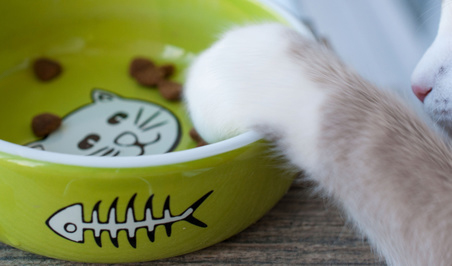 Cats and PG: A Unique Sensitivity
Cats and PG: A Unique Sensitivity
Although PG is widely-used in dog food (not to mention tons of other consumer products), it hasn’t been used in cat food for a little while now. The reason for this is that cats have a unique sensitivity to PG, and when it was used in cat foods, it was linked to something called “Heinz body anaemia.”This is a condition in which the haemoglobin in red blood cells becomes “denatured” – meaning that it loses its natural structure – thereby reducing the cells’ ability to carry oxygen. This is obviously a bad thing, and cats are particularly susceptible to the problem.
When PG was fed to cats as part of semi-moist foods, the amounts they consumed were enough to create Heinz bodies and lead to problems. For example, one study looked at the effect of feeding cats a diet with a normal amount of PG present (1.6 g per kg of weight) for five weeks and feeding them a high-PG diet (8 g per kg of weight). They found that the lower dose led to 28 % of the blood cells developing Heinz bodies, and the higher dose led to a massive 92 %. Cat food now doesn’t contain PG for this reason.
This is really all of the information you need on the issue. It’s clear that there is a potential risk to cats from exposure to PG, but the problems seen are when cats eat large amounts as part of their diet. For a 5 kg cat, 1.6 g per kg would be 8 g per day. If you’re vaping a 50/50 PG/VG e-juice, you’d have to vape over 15 ml (and absorb all the PG) to consume that much yourself, much less expose your cat to that much second-hand.
The short version is that cats are particularly sensitive to PG, but they’ll never be able to inhale enough of your second-hand vapour to cause problems. The issues arise when cats are consuming a substantial amount of PG as part of their diet (6 % of their diet has shown some negative effects in studies, but it gets worse as the dose increases), but the amount they’ll be exposed to through vapour is so minimal it’s nothing to be particularly concerned about.
That said, I care about my cat, so I don’t blow clouds into her face (no matter how funny it is) and I don’t vape near her food or water. Don’t be too concerned about it, but you should minimize your cat’s exposure as much as you can. Higher-VG juices decrease the risk too, so if you’re really worried you could always switch to using one.
https://www.ecigarettedirect.co.uk/ashtray-blog/2016/02/propylene-glycol-e-cigarettes.htmlKeeping Your Pets Safe: A Checklist
The key advice for keeping your pet safe when you’re vaping can be summarised very simply:- Keep Your E-Juice Out of Their Jaws and Paws: Store your e-juice somewhere your pet can’t get access to it. Simple as that.
- Be Wary of Pets Near Bottles You Keep With You: If you have a bottle of juice near you when you vape, ensure your pet doesn’t get access to it – keeping it in a pocket is a good approach, but leave it somewhere difficult for them to reach if possible.
- Don’t Blow Vapour in Your Pets Face: Your dog might like it, but you shouldn’t vape in your pet’s face. They might not inhale much bad stuff, but minimising it still makes sense.
- Keep PG Away From Cats: Cats are sensitive to PG, so exercise additional caution with both your vaping and your e-juice storage if you have a cat.
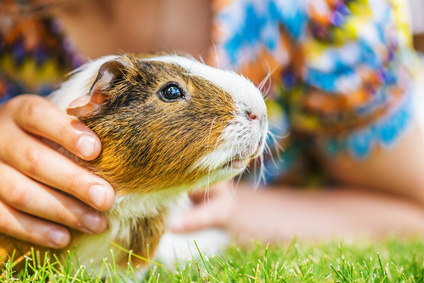 Other Pets
Other Pets
As the most common pets, we’ve focused on cats and dogs for this post, but the advice applies to other pets too. For the risk of nicotine poisoning, smaller animals are at greater risk, so be particularly careful with rats, mice or other small animals.For second-hand vaping, the advice is exactly the same: don’t worry too much, but be sensible and don’t blow clouds at your bearded dragon.
Conclusion: Vaping is Safer Than Smoking for Pets Too
Vaping isn’t completely safe, for you or your pets. But, just as with humans, vaping is realistically safer than smoking for your pets too.Second-hand vapour is unlikely to harm them, and is undoubtedly much less likely to harm them than second-hand smoke.
Although the risk of nicotine poisoning is arguably greater with e-liquid than cigarettes, cigarettes do contain a lot of nicotine too, and pose a risk to pets who eat them.
The good news is that as long as you exercise some caution, your vaping will definitely pose less of a risk to your pets than your smoking would, just like it does to you.
Just don’t let your cat vape.